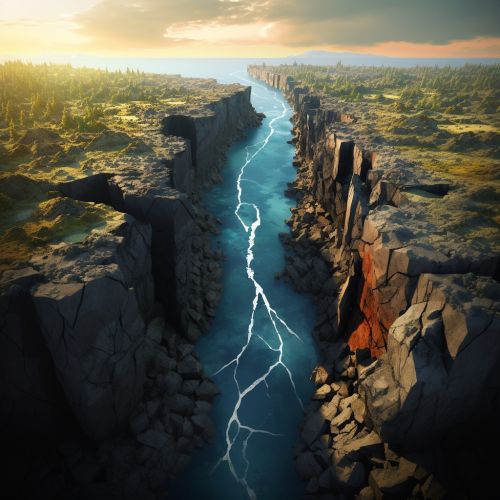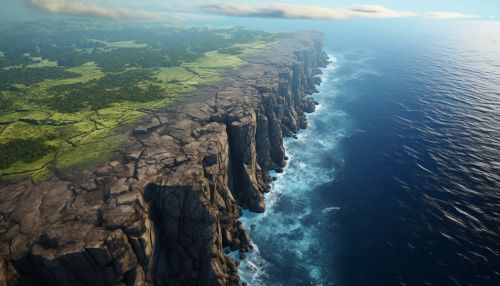Tectonics
Introduction
Tectonics is a branch of geology that studies the large-scale deformation of the Earth's lithosphere. The term derives from the Greek word "tektōn," meaning "builder" or "architect". It is primarily concerned with the movement and interaction of the Earth's tectonic plates, which are large pieces of the Earth's lithosphere that move slowly over the underlying, semi-fluid asthenosphere.


Plate Tectonics
The theory of plate tectonics, developed in the mid-20th century, revolutionized the study of tectonics. This theory posits that the Earth's lithosphere is divided into several large and small plates that move relative to each other. These movements can result in the formation of mountains, earthquakes, and volcanic activity, among other geological phenomena.
Plate Boundaries
Tectonic plates interact at their boundaries, which can be categorized into three types: convergent, divergent, and transform.
At convergent boundaries, two plates move towards each other, causing one plate to subduct beneath the other. This process can lead to the formation of deep-sea trenches and volcanic arcs.
Divergent boundaries occur when two plates move away from each other, creating a gap where magma rises to form new crust. This process is most evident at mid-ocean ridges.
At transform boundaries, two plates slide past each other horizontally. This movement can cause intense seismic activity, as seen along the San Andreas Fault in California.
Tectonic Processes
Tectonic processes are the mechanisms by which tectonic activity occurs. These include subduction, seafloor spreading, and continental drift, among others.
Subduction
Subduction is the process by which one tectonic plate is forced under another. This occurs at convergent boundaries and can lead to the formation of volcanic arcs and deep-sea trenches.
Seafloor Spreading
Seafloor spreading is a process that occurs at divergent boundaries, where new oceanic crust is formed through volcanic activity and then gradually moves away from the ridge.
Continental Drift
Continental drift is the movement of the Earth's continents relative to each other. This theory, proposed by Alfred Wegener in the early 20th century, was a precursor to the theory of plate tectonics.
Impact on the Biosphere
Tectonic activity has a significant impact on the Earth's biosphere. It influences climate patterns, shapes the geographical distribution of organisms, and drives evolution through mechanisms such as allopatric speciation.
